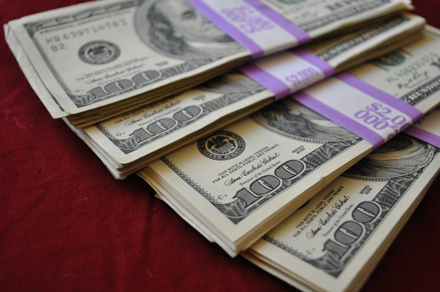
Want to learn how to double … triple … even 10x your money?
Read on.
If you’re like most people, your only money-making asset is your ability to work. Take that away, and you’re sunk.
But here’s a little-known truth: our ability to work is limited by our time, energy, and desire. Our money’s ability to work is unlimited.
Send your money to work on your behalf, and you’ll never need to commute to the office or punch a clock again.
Rebels who have reached financial freedom don’t need to work, because their money is their best employee. They can choose to work (that’s the beauty of freedom), but they don’t need to.
And guess what? You can enjoy this type of freedom, too.
Instead of enduring a soul-crushing commute to work, you can send your money to work. Your money will earn money. That money will earn even more money. And on it goes.
Conformists: Work >> Earn >> Spend
Rebels: Work >> Earn >> Invest >> Earn >> Invest
“But wait!” you say. “Only rich people can invest! Us regular schmucks can barely stay afloat!”
Okay, regular people … if you’re at home, pause for a second and look around the room. If you’re not at home, close your eyes and imagine your living room or your bedroom.
Now, conduct a mental inventory of every little item within that room. Here’s mine, looking at my bathroom:
Scissors – $4
Deodorant – $5
Razors – $6
Shaving cream – $4
Sunblock – $9
Bath mat – $15
Towels – $12
Shower curtain – $15
Face wash – $6
Exfoliant – $5
Moisturizing cream – $10
And I haven’t even gotten to the shampoo, conditioner, leave-in conditioner, washcloths, blow dryer, hairbrush, toothbrush, toothpaste, mouthwash, floss, tweezers, nail clippers, nail polish, nail polish remover, cotton balls, lip balm, hair ties, headbands, hairspray, styling gel, mascara, eyeshadow, foundation, soap, travel-size bottles of all this stuff so I can take it on an airplane …
None of this stuff is extravagant. No one is going to come to my house and say, “Wow, Listerine! You’re so wealthy, you own mouthwash!”
But this is crap.
And it’s keeping us broke. It’s keeping us paycheck-to-paycheck.
Quit buying crap. Invest your money instead.
Imagine that you start saving $50 per week. After about 6 months, you’ve saved $1,300.
You put this into an index fund that tracks the overall U.S. stock market. You leave it there for the next 18 years, and you don’t bother saving an additional penny during that time. If the market creates 9 percent annualized returns, that money will more than quadruple to $6,000.
That’s right — your money could quadruple in less than two decades, with reasonable market returns, no sophisticated or risky investing, and no real effort on your part.
Let’s think about this for a moment. What’s the implication?
If you can save 25% of your income, this portfolio could grow to the size of your entire annual income within less than two decades. And if you consistently repeat this — year after year — you could escape the rat race in as little as two decades or less.
No specialized knowledge required. No high-risk investments needed. No glamorous startup business. Just plain, simple index funds are all you need.
“Other than the stock market, how else can my money make money?”
Start a business, buy tax liens, buy bonds and securities, or invest in real estate. Let’s focus on the real estate example.
Imagine that you buy a duplex for $225,000 and rent it for a total of $2,500 per month (at $1,250 per side).
You pay $1,250 per month for your mortgage, $250 for management, $250 for repairs and maintenance and $250 for vacancies (monthly average). Your total monthly costs are $2,000.
You pocket $500 per month, or a net profit of $6,000 every year, from this single investment alone. Repeat this 10 more times, and you’ve just created a “side income” of $60,000 — that someone else is paid to manage.
But how will you buy this property?
Like I said, it costs $225,000. The bank requires a 20 percent down payment, which means you need to cough up $45,000. In order to make this happen, you decide to save $500 per month.
Does this sound daunting? Get a roommate. Trade-in your car for an older vehicle, or bike and walk instead of drive. Start a side business, or pick up a second job. Here’s how a Rebel named Erin saved one years’ worth of expenses).
After 90 months — 7.5 years — you’ll save enough to buy the building. Now instead of trading your time to earn $500, your investment puts that same $500 in your pocket every month.
By spending a few years upfront earning an extra $500 per month, you’ll build yourself a stream of income that instantly pays you $500 per month, even if you do nothing but lay in bed watching Netflix.
Oh, and here’s extra icing on the cake:
- Does the building itself rise in value? Great. That’s a bonus, but you’re not dependent on it.
- As inflation rises, so does the rent, which means your investment is inflation-protected. Sweet!
- But even though the rent rises with inflation, your $1,250 mortgage stays the same, which means that every year your mortgage payment decreases (in real dollars) … and you pocket more and more money.
How’s that for letting your money earn money?